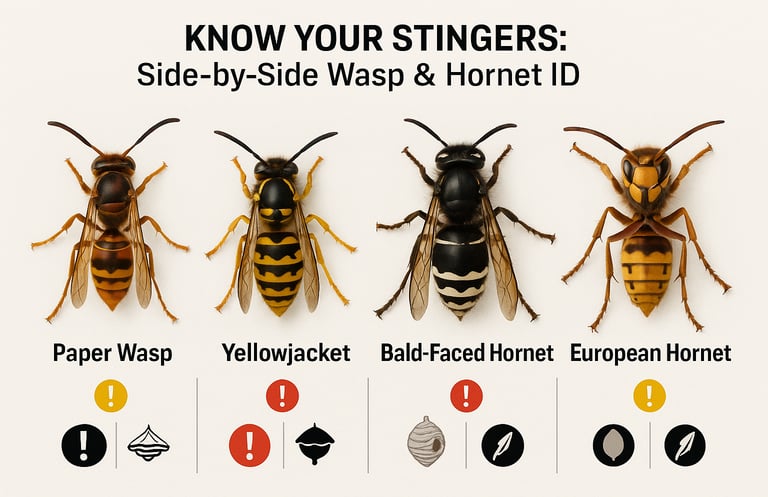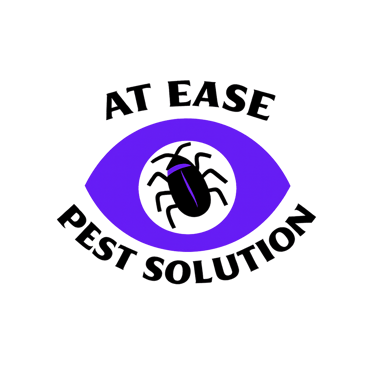Identifying Wasps and Hornets in the Pacific Northwest: What You Need to Know
If you find a wasp or hornet nest on your property, the safest and smartest move is to call a professional. At Ease Pest Solution has extensive experience with stinging insect identification, removal, and prevention. We know how to handle even the most aggressive species using proven, safe methods that protect you, your family, and your pets. Let us take the sting out of your situation.
6/3/20252 min read


Identifying Wasps and Hornets in the Pacific Northwest: What You Need to Know
The Pacific Northwest—especially Washington and Oregon—is home to a variety of stinging insects, including several species of wasps and hornets. While these flying pests play a role in the ecosystem, they can also pose serious risks to both humans and pets if provoked or disturbed. Knowing how to identify them, understanding the dangers they present, and taking the right safety precautions can help you stay protected.
Common Wasps and Hornets in Washington & Oregon
Here are the most frequently encountered species in our region:
1. Paper Wasps
Appearance: Slender with long legs; black or brown with yellow or reddish markings.
Nests: Open, umbrella-shaped nests hanging under eaves, railings, or in shrubs.
Behavior: Less aggressive than others, but will sting if their nest is threatened.
2. Yellowjackets
Appearance: Bright yellow and black, more compact in body size.
Nests: Hidden underground, inside walls, or in dense bushes.
Behavior: Extremely aggressive, especially in late summer. Known for repeated stings and swarming.
3. Bald-Faced Hornets
Appearance: Large black wasps with white faces and markings.
Nests: Basketball-sized paper nests hanging from trees, buildings, or utility poles.
Behavior: Highly territorial and aggressive if you approach their nest.
4. European Hornets (less common, but increasingly seen)
Appearance: Larger than yellowjackets with brown and yellow striped bodies.
Nests: Usually in hollow trees or wall voids.
Behavior: Can be aggressive and fly at night, which is unusual for wasps.
Why Identification Matters
Being able to correctly identify these insects can be the difference between safety and a potentially dangerous encounter. Mistaking a yellowjacket nest for a harmless bee swarm or ignoring a hornet nest can lead to painful stings, allergic reactions, and swarming attacks.
The Dangers They Pose
Wasps and hornets aren’t just a nuisance—they’re a real threat to:
Humans: Their stings are painful and can trigger allergic reactions, including anaphylaxis, which is life-threatening.
Pets: Dogs and cats may disturb nests unknowingly and get stung multiple times.
Property: Nests built in walls, attics, or eaves can cause long-term damage and even structural issues if not addressed quickly.
What to Do If You Spot a Nest
DO NOT attempt to remove the nest yourself, especially if it's active.
Avoid loud noises, vibrations, or water sprays—these can agitate the insects.
Keep children and pets away from the area.
Do not block their entry or exit—this can cause them to find alternative ways indoors.
Call the Experts: At Ease Pest Solution
If you find a wasp or hornet nest on your property, the safest and smartest move is to call a professional. At Ease Pest Solution has extensive experience with stinging insect identification, removal, and prevention. We know how to handle even the most aggressive species using proven, safe methods that protect you, your family, and your pets.
Let us take the sting out of your situation.
For more information or to schedule a consultation, visit:
Sources:
Washington State University Extension: Identifying and Managing Wasps
Oregon State University Extension: Hornets and Yellowjackets in the PNW

